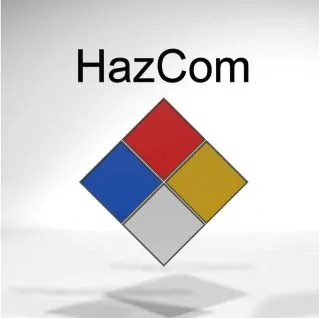How to Build a Compliant Hazard Communication Program

Managing hazardous chemicals in the workplace isn’t just good practice—it’s the law. OSHA’s Hazard Communication Standard (29 CFR 1910.1200) requires every employer to implement a written hazard communication plan. Done right, a HazCom program protects employees, reduces liability, and ensures regulatory compliance.
This article outlines exactly how to build a compliant HazCom program, avoid common violations, and download a free toolkit to help you get started.
What Is a Hazard Communication Program?
A Hazard Communication Program, or HazCom, is a written system that informs employees about chemical hazards in the workplace. This includes proper chemical labeling, access to Safety Data Sheets (SDSs), and training on how to safely use and handle hazardous substances.
Under OSHA’s HazCom Standard, every employer with hazardous chemicals must implement a documented plan, maintain up-to-date SDSs, and provide clear labeling according to the Globally Harmonized System (GHS).
Why You Need a HazCom Program Now
- ⚠️ OSHA cited over $3 million in HazCom violations last year.
- 🧾 SDS noncompliance and missing labels are top audit triggers.
- 👷 Your workers deserve clear, consistent hazard communication.
5 Essential Elements of a Compliant HazCom Program
- Maintain a Hazardous Chemical Inventory: Track all hazardous substances with product names, manufacturers, and SDS references.
- Implement GHS-Compliant Chemical Labeling: Ensure containers are labeled with GHS pictograms, signal words, and hazard statements.
- Provide Safety Data Sheets (SDSs): Make SDSs easily accessible to all employees, digitally or in binders.
- Conduct Employee Training: Train workers at hire, when hazards change, and regularly thereafter on label reading and chemical safety.
- Create a Written Hazard Communication Plan: Detail your company’s procedures for compliance, including responsible personnel and training logs.
Common HazCom Compliance Mistakes (and How to Avoid Them)
- No written HazCom plan
- Secondary containers without GHS labels
- Outdated or missing SDSs
- Untrained employees on hazard communication
- Failure to distinguish between OSHA and DOT labels
🎁 Download the Free HazCom Program Starter Toolkit
This free, OSHA-ready toolkit includes:
- Customizable Written HazCom Program Template
- Fillable Employee Training Log
- GHS Label & SDS Compliance Checklist
📥 Download the HazCom Starter Toolkit Now
Next Steps: Simplify Compliance with SDS Software
KHA’s Online‑SDS system makes managing SDSs and GHS labels fast, compliant, and audit-ready:
- 🌐 Mobile access & offline backup
- 🔄 Automatic GHS & OSHA updates
- 👥 Unlimited users & expert support
HazCom FAQs
Q: What’s the difference between a hazard communication plan and SDS management?
A: Your plan outlines the overall strategy, while SDS management ensures chemical-specific documentation is accessible.
Q: Is digital SDS access allowed?
A: Yes, as long as it’s accessible without delay or supervisor permission.
Q: Does HazCom apply to office settings?
A: Not usually—unless hazardous chemicals are used outside standard cleaning or toner products. Awareness is still encouraged.
Protect your workers, avoid costly fines, and simplify compliance—start your HazCom program today with expert support and a free toolkit.
